William Dampier (1651-1715) was the first Englishman to visit Australia, as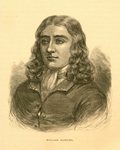 crew of the buccaneer vessel Cygnet, - in 1688. William Dampier was also the first person to circumnavigate the world three times. Dampier’s intelligent observation of all he saw, and his ability to tell a good story, established him as one of the first best-selling authors when he published his journal of A New Voyage Round the World in 1697. The book’s popularity was such that even King William III was impressed. William Dampier was appointed commander of the Roebuck and commissioned to find out more about the land around the East Indies.
crew of the buccaneer vessel Cygnet, - in 1688. William Dampier was also the first person to circumnavigate the world three times. Dampier’s intelligent observation of all he saw, and his ability to tell a good story, established him as one of the first best-selling authors when he published his journal of A New Voyage Round the World in 1697. The book’s popularity was such that even King William III was impressed. William Dampier was appointed commander of the Roebuck and commissioned to find out more about the land around the East Indies.
The son of a tenant farmer in East Coker, Somersetshire, William Dampier (1651-1715) was schooled in Latin and arithmetic. After his parents died when he was young, William decided he wanted to see the world. He became an apprentice in the merchant navy at the age of 19. After winter trips to France and Newfoundland, he decided he didn’t like cold climates so next joined a ship leaving London for Java, Indonesia. With England at war on his return home William joined the Royal Navy in 1673 and fought in the Anglo-Dutch wars. After becoming seriously ill he left the Navy and recuperated at home where a neighbour offered him employment managing his plantation in Jamaica. Dampier accepted, and was set on his future course of piracy and exploration.
After six months working on plantations Dampier returned to sea, on trading vessels around Jamaica. Dampier was a keen observer of men, nature and “the benefit of the land and sea-winds”. He began keeping journals of his travels. From 1675 to 1678 Dampier logged wood in Mexico, with around 270 other Englishmen. He showed more thoughtful consideration than most when he noted in his journal that “It is not my business to determine how far we might have a right of cutting wood there.” When his income was insufficient Dampier took a break from logging and became a buccaneer (the West Indies term for piracy) along the coast. Dampier obviously benefited financially from his stint of buccaneering. He returned to England and married Judith “from the household of the Duchess of Grafton”, and began formalities for the purchase of a small property on the Dorset Downs.
In 1679 Dampier travelled as a passenger on a merchant vessel to 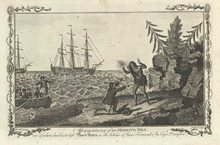 Mexico. He noted in his journal that this trip “proved to be a voyage round the world”. Many of Dampier’s travels were opportunistic. He sailed in many different ships, with side trips in boats and even canoes. Instead of returning to England, Dampier joined a trading voyage to the West Caribbean ‘Moskito’ Coast. When they called in to Negril Bay before leaving the west coast of Jamaica, all the crew except the captain left to join a group of buccaneer ships. A few days later Dampier also joined them.
Mexico. He noted in his journal that this trip “proved to be a voyage round the world”. Many of Dampier’s travels were opportunistic. He sailed in many different ships, with side trips in boats and even canoes. Instead of returning to England, Dampier joined a trading voyage to the West Caribbean ‘Moskito’ Coast. When they called in to Negril Bay before leaving the west coast of Jamaica, all the crew except the captain left to join a group of buccaneer ships. A few days later Dampier also joined them.
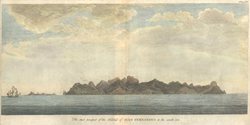 In 1684, after sailing along the Pacific coast of South America, attacking towns as well as ships, Dampier landed on Juan Fernandez Island - and they recovered ‘Will’, the Moskito Indian they had abandoned three years previously when they left in a hurry to avoid Spanish ships. Moskito men were happy to work on English ships and it was a happy reunion with Will.
In 1684, after sailing along the Pacific coast of South America, attacking towns as well as ships, Dampier landed on Juan Fernandez Island - and they recovered ‘Will’, the Moskito Indian they had abandoned three years previously when they left in a hurry to avoid Spanish ships. Moskito men were happy to work on English ships and it was a happy reunion with Will.
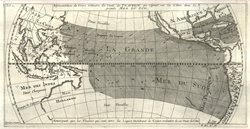
In 1686 Dampier joined Captain Swan on Cygnet, headed for the East Indies. Arriving in Acapulco too late to join the Manila Galleon for its Pacific crossing, Swan, with Dampier’s navigational skills, set out alone. Swan suggested piracy would resume on arrival. During six months in Mindanao, Dampier recorded plants and animals, inhabitants, the local government, religion, manners and customs while Captain Swan enjoyed the comforts offered by the locals.
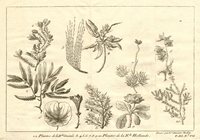 Cygnet
Cygnet’s crew grew bored and seized the ship when Captain Swan and 36 crew were ashore. Captain Read was appointed, with William Dampier as navigator. Little pillaging occurred and Dampier recorded land at Formosa (Taiwan), Celebes (Indonesia), and Cape Leveque in New Holland (north of Broome in Western Australia) in 1688 - where
Cygnet was repaired. Heading for India the crew drank heavily and grew increasingly unruly. Dampier protested and applied himself to his journal as usual.
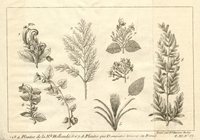
With a few other unpopular crew, Dampier was marooned on one of the Nicobar Islands, north of Aceh, Indonesia. He acquired a canoe and set out for the English factory at ‘Achin’. Fortunately Dampier “preserved his journal in a joint of bamboo, waxed at both ends” as a huge storm made their journey hazardous. Dampier was still in south-east Asia when he heard of the revolution in England that replaced the catholic King James II with his protestant daughter Mary and her Dutch husband, William of Orange. Dampier headed home, leaving for Capetown and England in 1691. In September he was reunited with his wife Judith at their home on the Dorset Downs.
In his journal Dampier glossed over his time as a buccaneer but he joined privateering vessels on more than one occasion after then. He also spent time in court in London - first with a claim for wages for himself and fellow crew members, and then he testified in defence of captured pirates. 1697 was an important year for Dampier. As well as further court action, he signed power of attorney to his wife Judith, was appointed to a salaried position in Customs, and published his journal as
A New Voyage Round the World.
Dampier’s journal recorded unfamiliar experiences and introduced avocado, cashew, breadfruit, barbecue, catamaran and chopsticks to the English language. His descriptions of the regions he visited excited the public’s imagination and his journal became an instant success. Dampier also recorded geography, winds and tides, and described and drew unusual plants and animals.
A New Voyage Round the World contributed greatly to current knowledge of places and peoples – despite Dampier’s descriptions not being as scientific as those from later better equipped expeditions.
The popularity of Dampier’s publication came to the attention of the King and also the Admiralty. So impressed was the Admiralty with Dampier’s well-written journals and apparent knowledge of the South Seas, that when Dampier submitted a proposal for a voyage to the East Indies and New Holland they appointed him Captain and commander of HMS
Roebuck with a commission to undertake further exploration and discoveries in the same region.
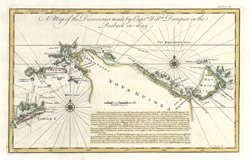
Dampier left England in 1699 and on reaching the west coast of Australia, passed between Dirk Hartog Island and the mainland to anchor in Shark Bay. He was unable to find fresh water or provisions, so with his crew suffering from scurvy he proceeded up the coast via East Lewis Island and Dampier Archipelago heading for Timor. He then sailed around New Guinea to New Ireland and named New Britain. Dampier returned to Batavia for repairs to Roebuck and for provisions, and then headed home via Cape Town. After passing the Cape of Good Hope the Roebuck sprang a leak. They managed to reach Ascension Island, where the ship was beached and abandoned. The crew remained there for forty days until they were picked up by a fleet of British ships. They arrived back in England in 1701. Unfortunately, Dampier was not a good captain and on his return to England was actually court-martialled for his poor treatment of his Royal Navy first officer.
Dampier did not recommend the land or inhabitants that he saw in Western Australia - which undoubtedly affected possible further exploration of the region. His first observations of our country - at Swan Point near Cape Leveque in 1688 - were made one hundred years before the First Fleet arrived at Port Jackson, Sydney in 1788 - on the recommendation of Captain James Cook.
William Dampier portrait.
Reunion with Moskito man, Will at Juan Fernandes Island
The Course of Winds across the Pacific
Botanical specimens recorded by Dampier in Australia ('New Holland')
Willilam's Dampier's Charting of Papua New Guinea